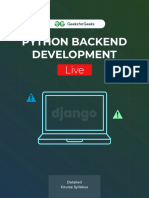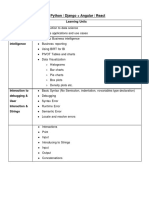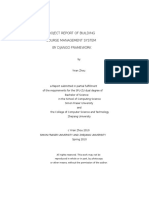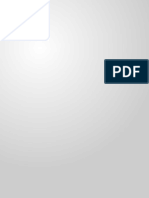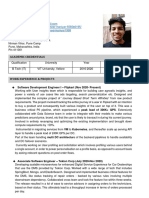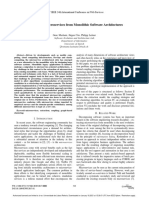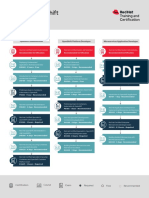Project: Comprehensive Online Learning Platform
Project Overview
Create an online learning platform where users can register, browse courses, enroll in courses,
and access course materials. The platform will have administrative functionalities for course
management. The project will use Django for the main platform, Flask for microservices, and
various Python modules for different functionalities.
Key Features
1. User Authentication and Authorization
- User registration and login (using Django's built-in authentication system)
- Role-based access control (student, instructor, admin)
2. Course Management
- Course creation, editing, and deletion (admin/instructor)
- Course enrollment (students)
- Course content upload (videos, documents, quizzes)
3. User Dashboard
- Personalized dashboard displaying enrolled courses, progress, and recommendations
4. Search and Filter
- Search courses by category, level, and instructor
- Filter courses based on different criteria
5. Microservices with Flask
- A separate microservice for handling video processing (upload, transcode, stream)
- Integration with the main Django application using REST APIs
6. Payment Integration
- Integrate a payment gateway for course purchases (e.g., Stripe, PayPal)
7. Discussion Forum
- A forum for each course where students can post questions and interact with instructors and
peers
8. Administrative Panel
- A comprehensive admin panel for managing users, courses, and platform settings
�Technologies and Concepts
1. Django Framework
- Models, Views, Templates, Forms
- Django Admin
- REST framework for API creation
- Authentication and Authorization
2. Flask Framework
- Creating microservices
- RESTful API design
- Integration with Django
3. OS Module
- File handling (uploading, saving, deleting course materials)
- Path manipulations
- Process management
4. Python Modules
- `requests` for API calls
- `pandas` and `numpy` for data handling and analytics
- `matplotlib` for visualizations (progress graphs, statistics)
- `celery` for asynchronous task queue (e.g., sending emails, processing videos)
Steps to Build the Project
1. Project Setup
- Set up Django project and applications for core functionalities
- Set up Flask microservices for specialized tasks
2. User Authentication and Authorization
- Implement user registration, login, and profile management
- Set up role-based access controls
3. Course Management
- Create models for courses, lessons, quizzes, and assignments
- Implement views and templates for course CRUD operations
4. Microservices Integration
- Develop Flask microservices for video processing and other tasks
- Create and consume REST APIs to integrate these services with Django
�5. Dashboard and User Interactions
- Design user dashboards to display personalized information
- Implement search and filter functionalities for courses
6. Payment Gateway Integration
- Integrate payment processing for course purchases
7. Discussion Forum
- Develop a discussion forum for course interactions
8. Administrative Panel
- Customize Django Admin for comprehensive platform management
9. Testing and Deployment
- Write unit tests and integration tests
- Deploy the application on a cloud platform (e.g., AWS, Heroku)
10. Documentation
- Document the project, including setup instructions, API documentation, and user guides











